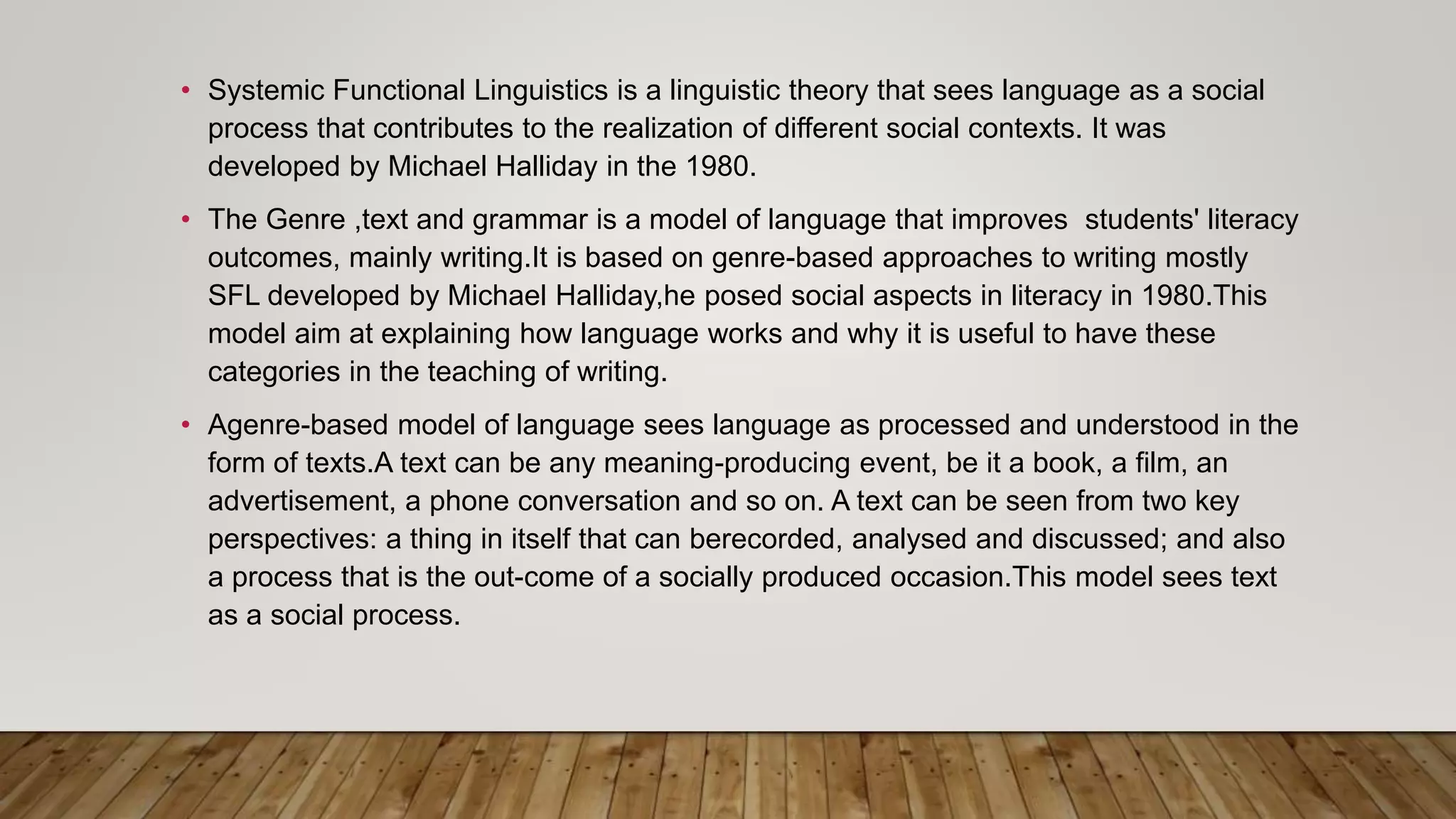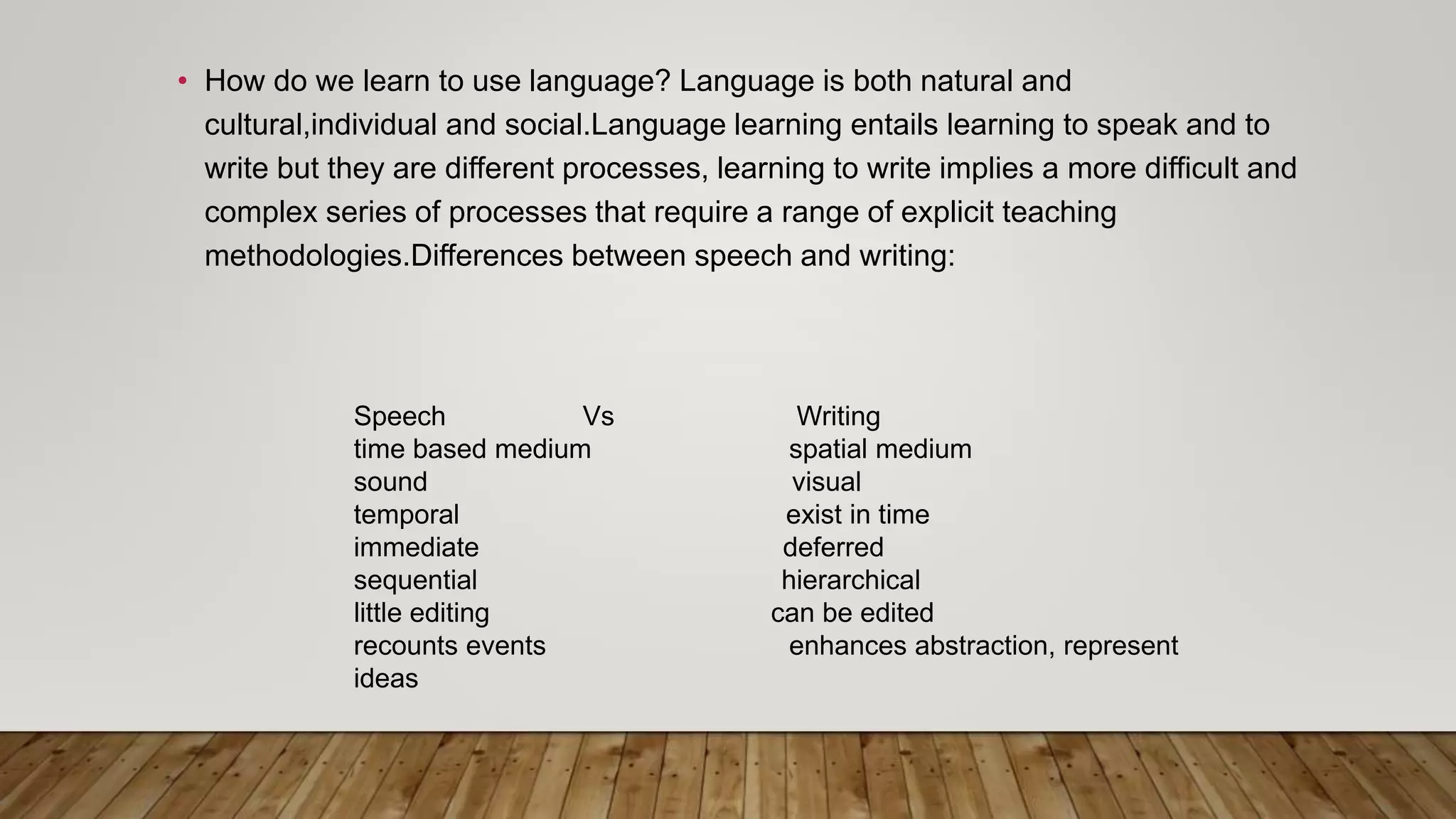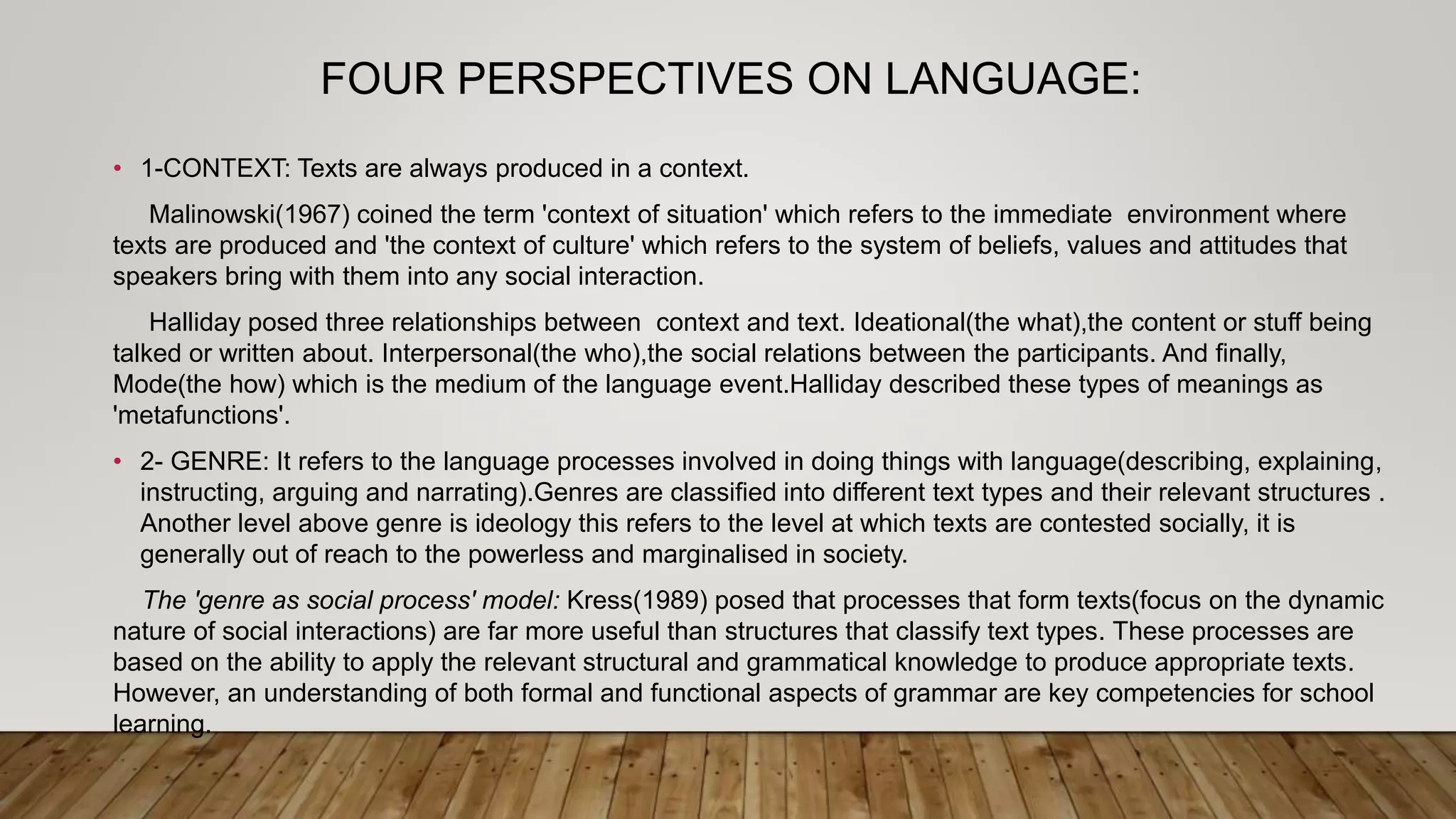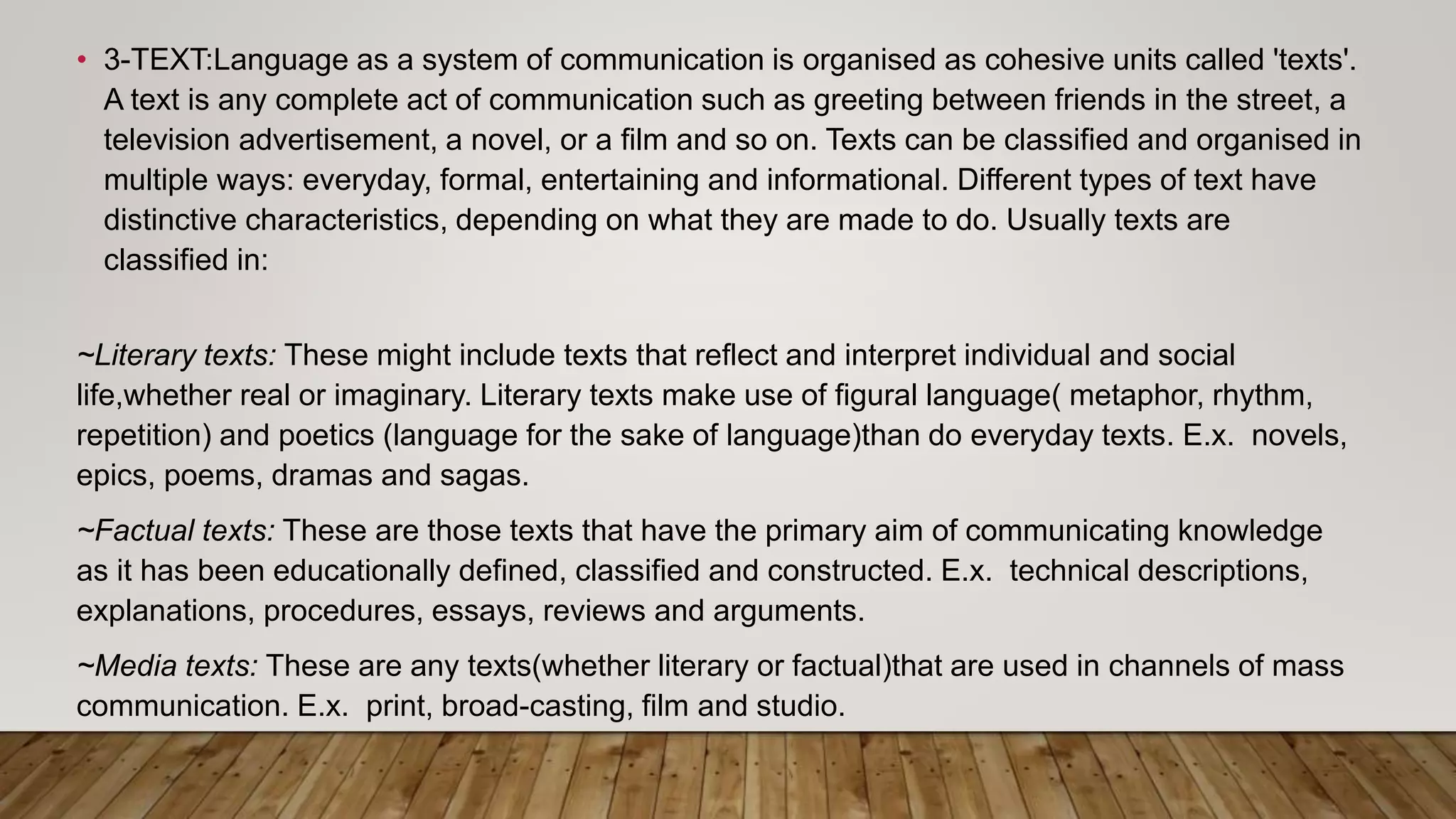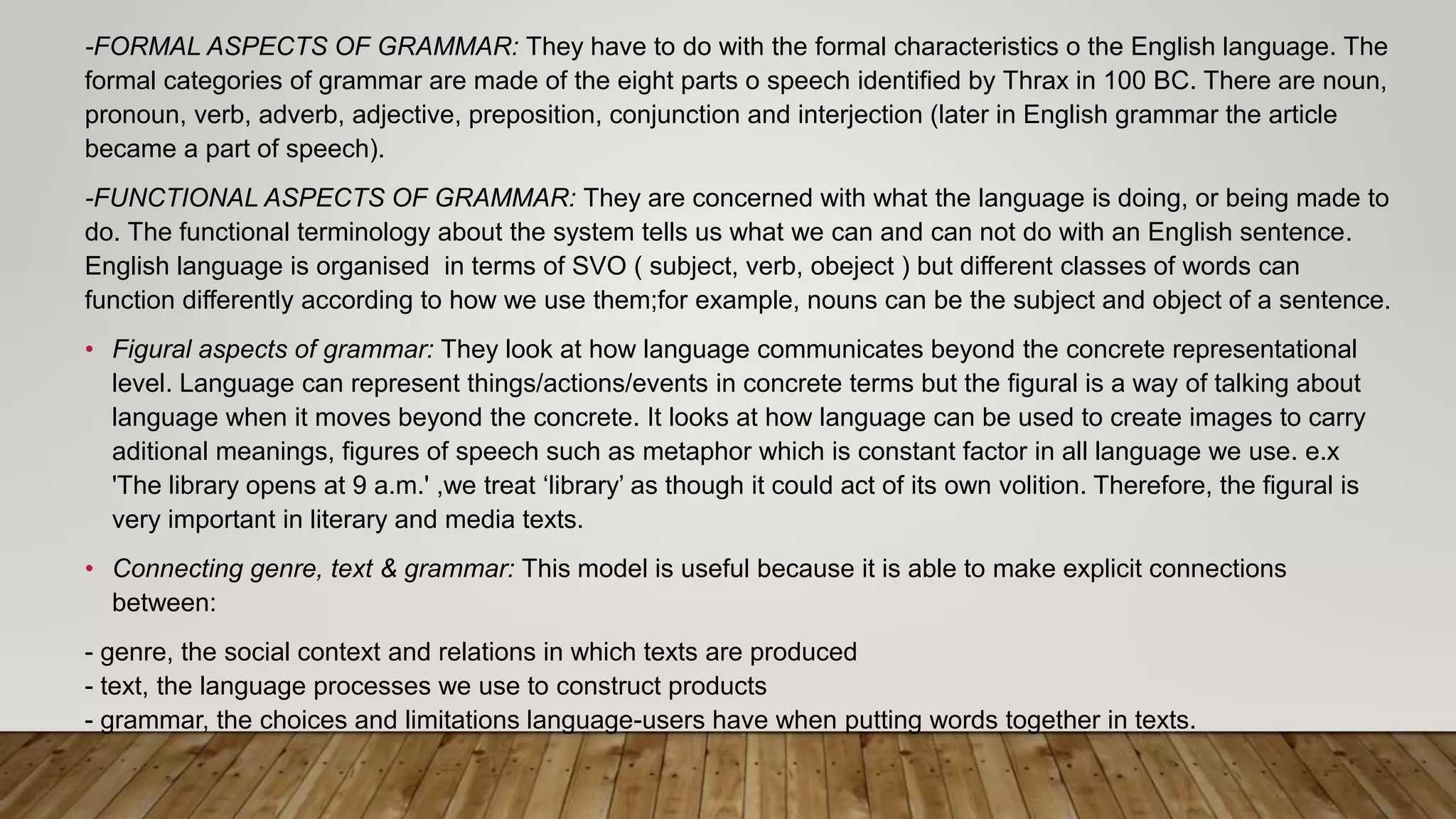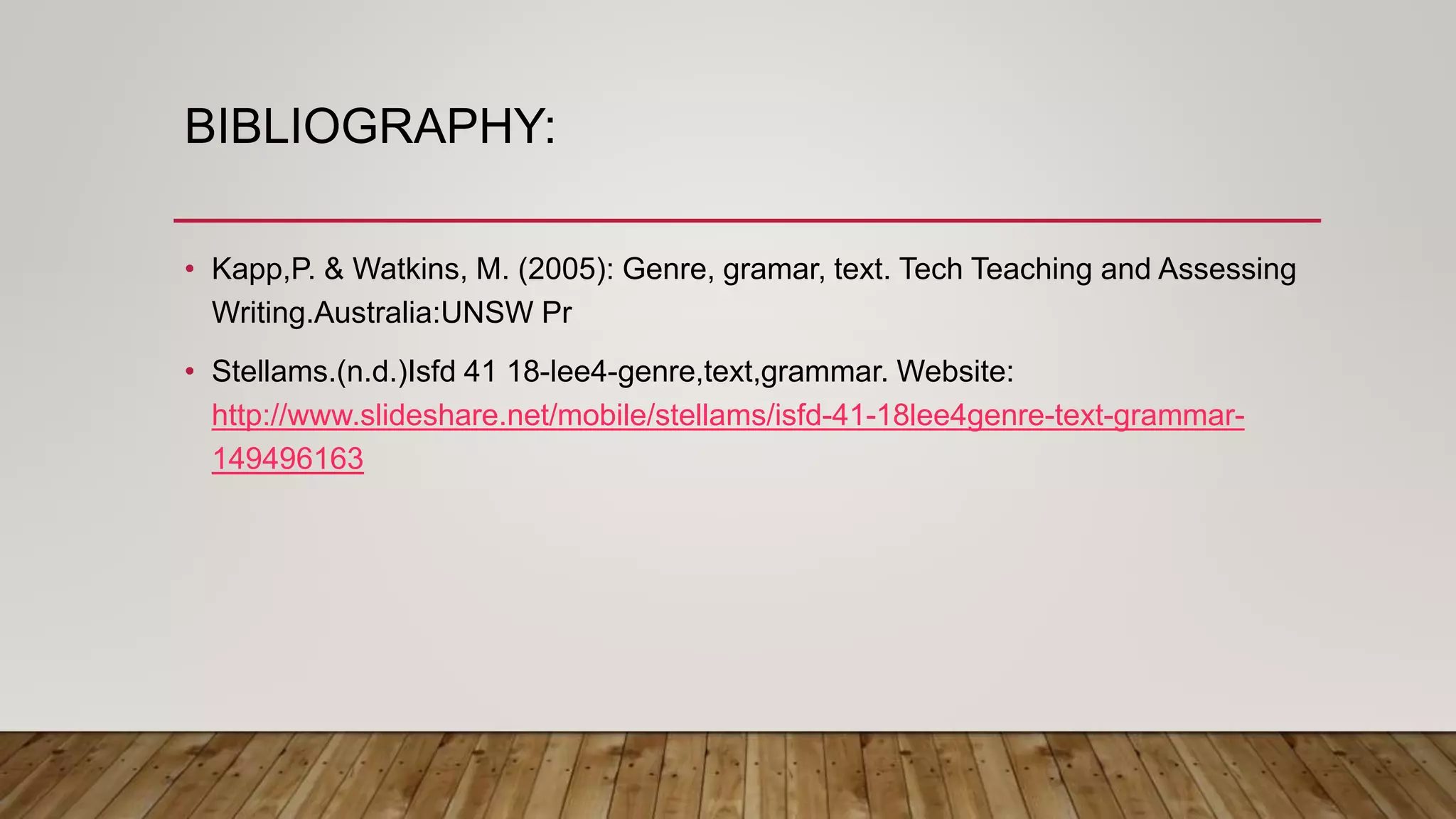This document provides an overview of the genre-based model of language. It discusses how this model sees language as a social process and understands texts based on their social context and purpose. The genre-based model analyzes language in terms of context, genre, text, and grammar. Context refers to the situation and culture where language is used. Genre describes the types of texts and their structures. Text is any complete communication, and grammar describes how texts are structured based on genre. The genre-based model aims to connect these elements to understand how language works in social situations.

